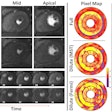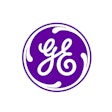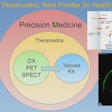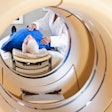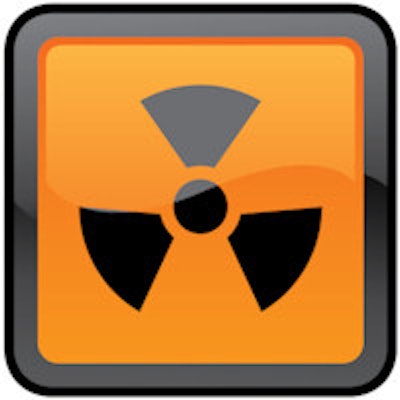
Nuclear medicine facilities in the U.S. appear to be getting the message about controlling radiation dose. A new survey of more than 300 SPECT and PET centers found that most are keeping dose levels within generally accepted levels.
The survey covered 225 sites performing technetium-99m (Tc-99m) methylene diphosphonate (MDP) SPECT bone scans and 95 locations conducting whole-body FDG-PET. It found that practitioners are staying well within recommended dosing guidelines and acceptable injection ranges.
"This is what I would call uninteresting results that are good," said lead study author Adam Alessio, a research associate professor of radiology at the University of Washington. "Not too exciting, but it is good news that people generally are dosing consistently."
The study is a joint collaboration of the Society of Nuclear Medicine and Molecular Imaging (SNMMI) dose optimization task force and the Intersocietal Accreditation Commission (IAC). Alessio co-chairs the task force with Frederic Fahey, DSc, director of nuclear medicine/PET physics at Boston Children's Hospital and past president of SNMMI. The other co-author is Mary Beth Farrell, director of accreditation for nuclear/PET at the IAC.
Adopting DRLs
According to the survey, many imaging facilities using low levels of ionizing radiation are moving toward the adoption of diagnostic reference levels (DRLs) to identify unusually high radiation doses, or they are using a strategy of achievable dose, which uses DRLs to optimize image quality and dose.
"One of the questions in our field is whether we should create diagnostic reference levels, as there are concerns about radiation from modalities such as CT," Alessio said when he presented the study's findings at the SNMMI annual meeting earlier this month.
In nuclear medicine, most institutions have standardized protocols that cite a range of appropriate injected activities for their practice. The use of diagnostic reference levels, achievable dose, or other guidelines are all intended to ensure appropriate dosing for studies, Alessio told AuntMinnie.com in a follow-up email. DRLs are generally set at 75% of all doses (either absorbed dose in CT or injected dose in nuclear medicine) for a specific exam and a specific patient size. DRLs could also be used as alert levels.
For example, if a particular study exceeds the DRL, a clinician would review the study to ensure appropriate dosing. In the U.S., guidelines are generally set at the 50% median dosing level. "In short, DRLs can be used to identify outliers, while guidelines are at the median," Alessio said.
The survey culled data from IAC-accredited nuclear medicine and PET facilities to explore the average administered radiation activity for each facility based on patient reports. Sites were categorized based on the type of facility, such as a hospital, private practice, mobile imaging, or freestanding center, and the reported dosing strategy, be it a fixed or weight-based dose strategy or a combination of protocols.
For bone scans, hospitals, private practices, freestanding facilities, and multispecialty imaging centers ranged in dose for Tc-99m MDP SPECT from 24.5 mCi (± 3.0 mCi) to 26.3 mCi (± 3.4 mCi). The average among the 225 facilities in the study was 25.1 mCi (± 3.2 mCi). Mobile imaging was notably higher at a dose of 35.5 mCi (± 7.4 mCi).
| Average dose for MDP-SPECT studies by site type | |||
| Site type | No. of facilities | Average bone scans per week | MDP dose (mCi) |
| Hospital | 111 | 15.0 | 24.5 (± 3.0) |
| Private | 50 | 4.8 | 26.3 (± 3.4) |
| Freestanding | 36 | 10.4 | 24.8 (± 2.9) |
| Multispecialty | 27 | 4.6 | 25.7 (± 2.6) |
| Mobile | 1 | 1.2 | 35.5 (± 7.4) |
| Total | 225 | 10.7 | 25.1 (± 3.2) |
"The good news is that for most of the facilities, they are injecting on average approximately 25 mCi, which is right in the center of recommended dosage," Alessio said.
SNMMI practice guidelines recommend dosing between 20 and 30 mCi, or weight-based dosing of 0.30 to 0.35 mCi/kg. Fifty-eight percent of the bone imaging facilities surveyed used a range of dose strategies, compared with 42% of facilities that employed a fixed-dose protocol.
Among the 95 polled sites performing FDG-PET, 64% of locations used a range-based dosing strategy. The average dose was 13.7 mCi (± 3.2 mCi). The lowest average dose was among multispecialty centers, at 11.4 mCi (± 5.5 mCi), while the average dose at hospitals was in the high range, at 14.4 mCi (± 2.8 mCi). Again, the highest average was in the mobile unit category, at 17.1 mCi (± 1.1 mCi).
| Average dose for FDG-PET studies by site type | |||
| Site type | No. of facilities | Average PET scan per week | FDG dose (mCi) |
| Hospital | 41 | 28.1 | 14.4 (± 2.8) |
| Private | 16 | 12.0 | 14.0 (± 2.0) |
| Freestanding | 27 | 22.4 | 12.9 (± 3.1) |
| Multispecialty | 8 | 11.0 | 11.4 (± 5.5) |
| Mobile | 3 | 52.6 | 17.1 (± 1.1) |
| Total | 95 | 23.0 | 13.7 (± 3.2) |
In general, there were no major differences in dosing between the types of facilities, except in the case of mobile imaging centers, which used, on average, 30% more dose for both bone and PET scanning, according to the researchers. However, there was only one mobile unit conducting bone scans and three units conducting FDG-PET scans.
"The value of this type of survey helps us establish norms about how we practice in the U.S. and helps us engage in the conversation of do we want to set diagnostic reference levels in nuclear medicine," Alessio said.
At present, reference levels are voluntary. Newer CT scanner consoles have the capability of setting site-specific alert levels to help ensure safe dosing; these alert levels could be set at the DRL. In nuclear medicine, there is no alert system yet.
"In my impression, nuclear medicine is in the early stages of thinking about DRLs and their use in practice," Alessio said. "I believe that in the next few years, the nuclear medicine community will move toward additional dose safeguards to ensure quality care and patient safety."
There do remain some challenges to creating diagnostic reference levels in nuclear medicine, however. Unlike CT, nuclear medicine has a wider variety of old and new gamma cameras in use, and DRLs are "not quite as translatable," Alessio said. "Especially for bone scans, there are a variety of cameras with different numbers of heads. A camera with a single head would need more of an injection than a triple-head system doing SPECT for MDP."
Still, Alessio added, reference levels might help ensure patient safety and appropriate usage.
"But the larger question is the rationale in how we select protocols; the reason that we do things," he said. "One reason is that everyone else is doing it that way, but we may want to beef up that reason with more evidence."















